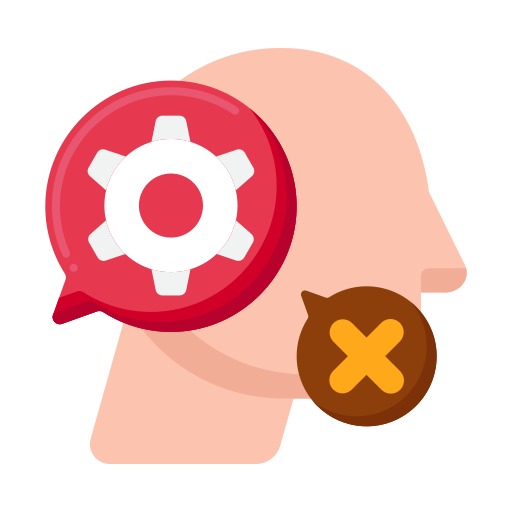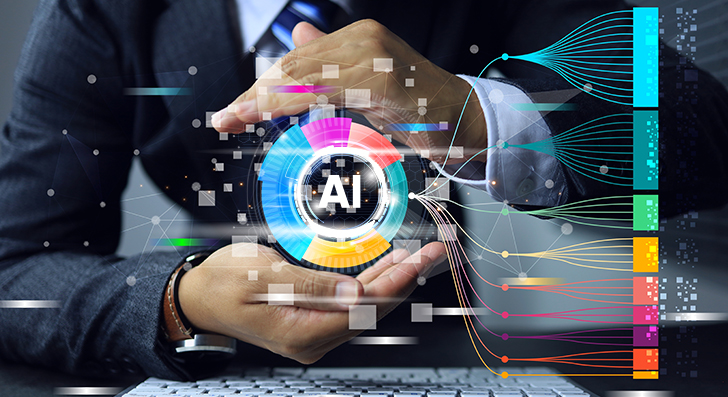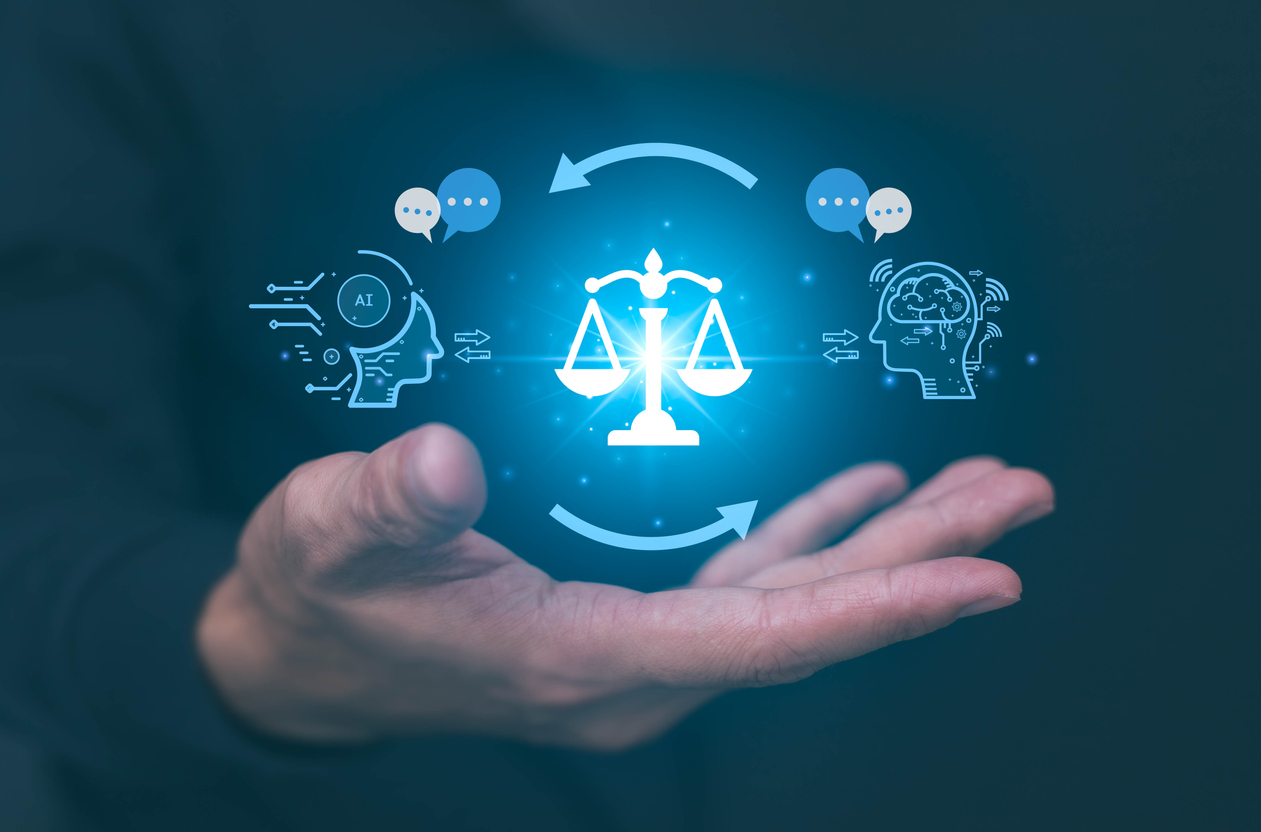The Future of Food Delivery
By the year 2050, it is predicted that the world’s population will have reached an astounding 9.7 billion people. As a result, there is growing concern about how to meet the growing demand for food while maintaining the essential elements of food security and sustainability as a result of this growth’s acceleration.
In light of these worries, the adoption of Artificial Intelligence in food delivery has the incredible potential to transform the sector and usher in a new era of increased sustainability. When talking about issues in the food sector, technology isn’t usually the first thing that comes to mind. However, automation in the food business is essential for both food production and delivery in the current environment. In the food sector, manufacturers create and package food using automation and robotics. Technology and AI in food industry has significantly improved food packaging by extending shelf life and enhancing food safety. The quality of food is increasing as production costs come down. The topic of this article’s in-depth discussion on the future of food delivery businesses is inspired by the realities of AI, robotics, drones, and 3D printing in the food
AI Powering a Smarter Kitchen
The landscape of food delivery is on the cusp of a revolution, driven by the power of artificial intelligence (AI). Imagine a future where your kitchen collaborates with your favorite food delivery app. AI is poised to transform the entire food delivery experience, from the moment you order to the first delicious bite.
Gone will be the days of poring over menus and struggling with indecision. AI-powered recommendations will suggest dishes tailored to your preferences, dietary needs, and even past orders. The kitchen itself will become an intelligent partner. Smart appliances can optimize cooking times, preheat ovens based on your order, and even suggest recipe substitutions based on what you have on hand.
But the benefits extend far beyond convenience. AI can ensure consistent food quality across different kitchens, analyzing recipe data and recommending adjustments to maintain the perfect taste. Furthermore, AI-powered inventory management can help restaurants maintain optimal stock levels, leading to fresher ingredients and ultimately, tastier food for you.
This smarter approach to food delivery isn't just about efficiency; it's about elevating the entire dining experience. Food safety is paramount, and AI can play a crucial role here. By analyzing data throughout the supply chain, potential contamination risks can be identified and mitigated before they reach your doorstep.
Impact of AI on Food Delivery Services: 5 Trends to Lookout!
The food business can benefit from food delivery industry innovation and AI in terms of streamlining and optimizing each step of the value chain, cutting costs, and minimizing human error. Optimization of the supply chain will increase accountability and reduce waste.
Due to its allegedly limitless potential, artificial intelligence (AI) is being employed more and more in all business areas and is being integrated with technology globally. Whether it is utilized for production, calorie counting, or extraction and processing, artificial intelligence (AI) has a significant impact on the food sector and is increasingly used in modern times. Let’s examine the top 5 AI and food delivery trends in more detail:
Producing Good Food Quality:
While AI is making food delivery faster and more convenient, ensuring good food quality is another challenge. Here's how AI can actually contribute to better food quality:
Enhanced Food Safety: AI can analyze data throughout the supply chain, from farm to restaurant, to identify potential contamination risks. This allows for preventative measures and faster response times to any problems.
Intelligent Inventory Management: AI can predict demand for specific dishes, helping restaurants maintain optimal stock levels. Fresher ingredients lead to tastier food.
Recipe Optimization and Consistency: AI can analyze recipe data and suggest adjustments to maintain consistent taste and quality across different kitchens.
Quality Control with AI-powered Inspection: Imagine AI-powered cameras that can identify undercooked food or wilted greens. This can ensure dishes meet quality standards before being sent out for delivery.
Delivery Temperature Monitoring: Special sensors with AI integration can track food temperature during delivery. This helps identify deliveries that might have spent too long in transit, compromising food quality.
Supply Chain Management
Due to the new regulations governing food quality and the rising demands for disclosure, supply chain management is a crucial duty for all food enterprises. In the food industry, AI is being utilized to improve supply chain operations by:
-
Food Standards Monitoring
-
Product Evaluation at Several Levels
-
Keeping Track of Inventories with Precise Estimates
-
Monitoring of Goods from Production to Distribution
-
Ensuring Fundamental Hygiene Guidelines
In food plants, like in a kitchen, adequate personal hygiene is necessary to ensure that the food is safe and the facility is compliant. AI technology, for instance, can be used in manufacturing facilities as well as restaurants by utilizing cameras to watch staff and facial recognition and object-identification software to verify if they are wearing caps and masks as required by food safety rules.
McDonald’s is using Artificial Intelligence in food delivery to optimize its supply chain. McDonald’s is using analytics and artificial intelligence to balance supply and demand. By connecting individualized recommendations to its whole supply chain network, the fast-food company has created a revolutionary technique for managing its supplies and marketing significant products.
AI is brimming with potential to revolutionize food delivery services by introducing entirely new product offerings. Here are some exciting possibilities to consider:
Development of New Products
AI-powered Meal Planning and Customization: Imagine an app that uses AI to analyze your dietary needs, preferences, and even health goals to suggest personalized meal plans. These plans could integrate with delivery services, allowing you to order all the ingredients for the week with a single click.
Hyper-personalized Food Recommendations: AI can go beyond basic recommendations based on past orders. It could take into account factors like weather, current events, or even your mood, suggesting dishes that perfectly match your needs.
AI-driven Food Discovery: Food delivery apps can become powerful tools for exploration. AI can analyze user data and dietary restrictions to recommend exciting new cuisines or hidden gem restaurants based on your preferences.
Smart Kitchen" Integration: Food delivery platforms could partner with smart kitchen appliances. Imagine an AI-powered system that automatically places an order for missing ingredients when you decide to make a recipe or suggests recipe modifications based on what you already have on hand.
Zero-Waste Food Delivery: AI can optimize delivery routes and predict demand fluctuations, minimizing food waste at restaurants. Additionally, AI could connect customers with restaurants offering "imperfect" produce or leftover meals at discounted prices, promoting sustainability.
Robot Chefs and Automated Food Preparation: While still in the future, AI-powered robotic chefs could revolutionize kitchens partnered with delivery services. These robots could prepare dishes with precision and consistency, ensuring high-quality food even during peak hours.
Immersive Food Experiences: Imagine using VR technology to virtually "tour" a restaurant's kitchen or even experience a 360° view of a dish before you order it. AI can personalize these immersive experiences, making food delivery more engaging.
Sorting Food Categories
The first step in the supply chain is sorting the food, and an AI can do this with greater efficiency than dozens of workers manually sorting things in a line. Machine learning and artificial intelligence are also capable of classifying items according to their size, weight, and color, and they do not run the risk of making mistakes.
Every establishment that receives fresh produce must spend time sorting the food. For instance, sorting out vegetables with flaws lowers consumer rejection. By combining automation and sensor-based visual filtering technology in the food sector to organize food from the perspective of the consumer, the issue might be solved. This system makes use of numerous sensing devices. When quality requirements are input, AI food delivery software makes sure that the processed food will meet those standards, resulting in a much more effective production process. As a result, manual sorting takes less time. Higher production, greater quality, and fewer waste are also present
AI in Food Delivery
Artificial intelligence (AI) is revolutionizing the food delivery landscape. From streamlining operations to personalizing your experience, AI is making food delivery faster, more convenient, and even tastier. AI algorithms optimize delivery routes, ensuring your food arrives fresh and fast. They also power chatbots that handle routine tasks and recommend dishes you'll love based on your past orders. In the future, AI could even power robotic chefs and create immersive food experiences using virtual reality. So next time you order dinner in, know that AI is working behind the scenes to create a delicious and delightful dining experience.
Advantages of Ai In Food Delivery Solutions
Quick door-to-door deliveries
AI is turbocharging the world of quick door-to-door deliveries. Imagine ordering groceries, medicine, or even hot meals and having them delivered in record time. AI algorithms are the secret sauce. They analyze traffic patterns, predict demand, and optimize delivery routes, ensuring the fastest possible service. This translates to fresh groceries on your doorstep within the hour or a steaming hot pizza delivered in minutes. The future of rapid deliveries is powered by AI, making our lives quicker and more convenient.
Individualized Recommendations
The fact is that every person has different eating preferences. While some choose to consume beer while eating a bucket of chicken nuggets, others prefer to consume healthful vegan salads. Your goal as a food delivery company should be to tailor the food recommendations to the individual tastes of the clients.
Therefore, a list of all the nearby restaurants with the greatest vegan menus should be available to anyone who appreciates vegan food. Once more, AI systems excel at analyzing user preferences and presenting tailored ideas in line with them. Better sales and a higher proportion of repeat business from customers can come from these personalized recommendations.
Integration of Chatbots to Improve Customer Support
In the fast-paced world of AI-powered food delivery, providing exceptional customer support is crucial. Here's where chatbots powered by AI shine. These virtual assistants can handle a significant portion of customer inquiries, freeing up human agents for complex issues. Imagine a seamless chat experience where a chatbot resolves basic queries like order tracking, menu clarifications, or minor modification requests. Furthermore, AI chatbots can analyze past interactions and learn to personalize responses, offering relevant suggestions or troubleshooting steps. This not only streamlines support but also reduces wait times and improves overall customer satisfaction. By integrating chatbots, AI is redefining customer support in food delivery, making it faster, more efficient, and personalized.
Automatic Restaurant Approval
Analyzing new restaurant applications and approving them to be placed on the platform is always a hassle for aggregator meal delivery applications. Entrepreneurs in the food delivery industry might benefit from smart delivery solutions for restaurants that can automatically analyze new apps and validate them by examining several aspects. As a result, there would be less difficulty and food aggregators will be able to list more eateries automatically.
How Can Artificial Intelligence Be Applied to Food Delivery Applications?
Artificial intelligence (AI) is having a major impact on food delivery applications, transforming the way we order food and get it delivered. Here's how AI is being applied in several key areas:
-
Optimizing Delivery Routes and Traffic Prediction: AI crunches vast amounts of traffic data to plan the most efficient routes for drivers. This translates to faster deliveries, reduced costs for services, and ultimately, happier customers with their food arriving quicker.
-
Smarter Customer Support with Chatbots: AI-powered chatbots can handle routine tasks like order placements, answer frequently asked questions, and even resolve minor issues. This frees up human customer service representatives to focus on more complex problems and provide a more personalized touch.
-
Enhanced Restaurant Operations: In kitchens partnered with delivery services, AI can play a role in optimizing operations. This can involve suggesting recipe substitutions based on inventory, recommending adjustments to maintain consistent dish quality across locations, or even using AI-powered cameras to inspect food for quality control before delivery.
-
Personalized Recommendations and Upselling: AI analyzes user data like past orders and browsing behavior to suggest dishes that might be of interest. This personalization can lead to increased customer satisfaction and encourage users to spend more by recommending tempting add-ons or complementary dishes.
-
Future Potential: Autonomous Deliveries: While still in its early stages, AI-powered self-driving cars and drones have the potential to revolutionize food delivery. Imagine receiving your hot meal delivered by a drone in a matter of minutes!
Future of Food Delivery Businesses: Increasing Customer Experience and Overcoming Obstacles
The future of food delivery businesses hinges on a two-pronged approach: enhancing customer experience and overcoming existing hurdles. AI will play a central role in both. On the experience side, expect personalized recommendations, real-time order tracking with greater transparency, and even immersive virtual menus using VR. However, obstacles like ensuring food quality during delivery and maintaining profitability remain. AI-powered route optimization and smart inventory management can address these challenges. Ultimately, by embracing AI and prioritizing customer satisfaction, food delivery businesses can carve a path towards a thriving future.
CONCLUSION :
The future of food delivery is brimming with exciting possibilities thanks to the integration of AI. From intelligent kitchen assistants streamlining operations to personalized recommendations for diners, AI is poised to revolutionize the entire experience. This technology not only promises faster deliveries and wider selections, but also holds the potential to elevate food quality and ensure consistent taste across kitchens. As AI continues to evolve, food delivery services that embrace this smarter approach can unlock a future filled with convenience, efficiency, and ultimately, delicious satisfaction for every customer.
Read more here : https://mindnotix.com/blogs/revolutionizing-groceries-how-ai-is-streamlining-your-deliveries
For more information contact : support@mindnotix.com
Mindnotix Software Development Company


 AI-Taxi App
AI-Taxi App AI-Food App
AI-Food App AI-Property Mgmt App
AI-Property Mgmt App AI-CRM
AI-CRM AI-Fantasy App
AI-Fantasy App
 Web Development
Web Development App Development
App Development Business & Startup
Business & Startup Hire Developer
Hire Developer
 Digital Marketing
Digital Marketing Lead-generation
Lead-generation Creative Agency
Creative Agency Branding Agency
Branding Agency Augmented Reality
Augmented Reality Virtual Reality
Virtual Reality Internet of Things
Internet of Things Artificial Intelligence
Artificial Intelligence Blockchain
Blockchain Chatbot
Chatbot



